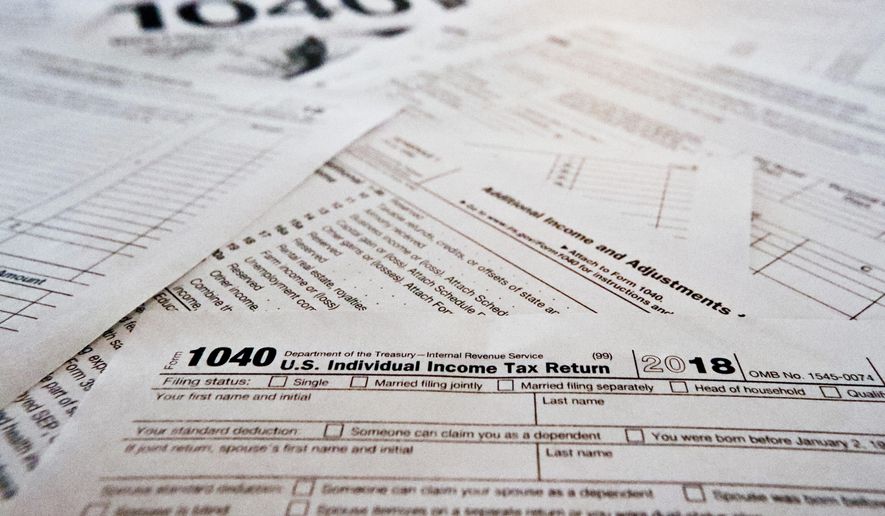The average tax refund so far this filing season is more than $3,100, the Treasury Department reported Thursday, putting things on track and denting Democrats’ claims that the 2017 tax cuts were actually hurting Americans’ wallets.
Returns are still coming in more slowly than in 2018, and not as many have been finalized by the IRS.
But the average refund is $3,143, topping last year’s $3,103.
That’s a major change from just a week ago, when the average refund was about $2,600 — and some prominent Democrats suggested the 2017 tax overhaul had backfired.
“The average tax refund is down about $170 compared to last year,” Sen. Kamala D. Harris tweeted Feb. 11, little more than a week into the tax-filing season. “Let’s call the president’s tax cut what it is: a middle-class tax hike to line the pockets of already wealthy corporations and the 1 percent.”
News outlets, meanwhile, sought out people whose refunds were smaller and used them as evidence of the tax law’s troubles.
The IRS, and GOP lawmakers on Capitol Hill, called the complaints premature. They predicted things would sort out once the filing season was in full swing and people could file tax returns claiming the Earned Income Tax Credit or the Child Tax Credit. Refunds for returns claiming those tax credits must be held until Feb. 15, as a fraud-prevention method.
Now that those refunds are being processed, it’s boosted the numbers.
“The increase in the weekly data is primarily due to the remainder of the Earned Income Tax Credits and Child Tax Credits being paid out this week,” the Treasury Department said. “Despite the higher refund average, we remind taxpayers that weekly filing season data is variable and will continue to fluctuate. We caution against drawing broad conclusions on refunds overall this early in the filing season.”
Treasury officials also said refunds aren’t the same as a tax bill.
Most Americans pay taxes throughout the year in withholdings from their paychecks.
Refunds are the amount they overpaid during the year.
So a smaller refund means they left less of their money in the hands of the IRS throughout the year, according to tax analysts.
Getting the withholdings right has been controversial. Democrats accused the IRS of shenanigans with the tax withholding tables drawn up after the 2017 tax cut law was passed, saying the government was leaving too much money in taxpayers’ hands to try to artificially inflate the benefits in the run to the 2018 election.
• Stephen Dinan can be reached at sdinan@washingtontimes.com.




Please read our comment policy before commenting.